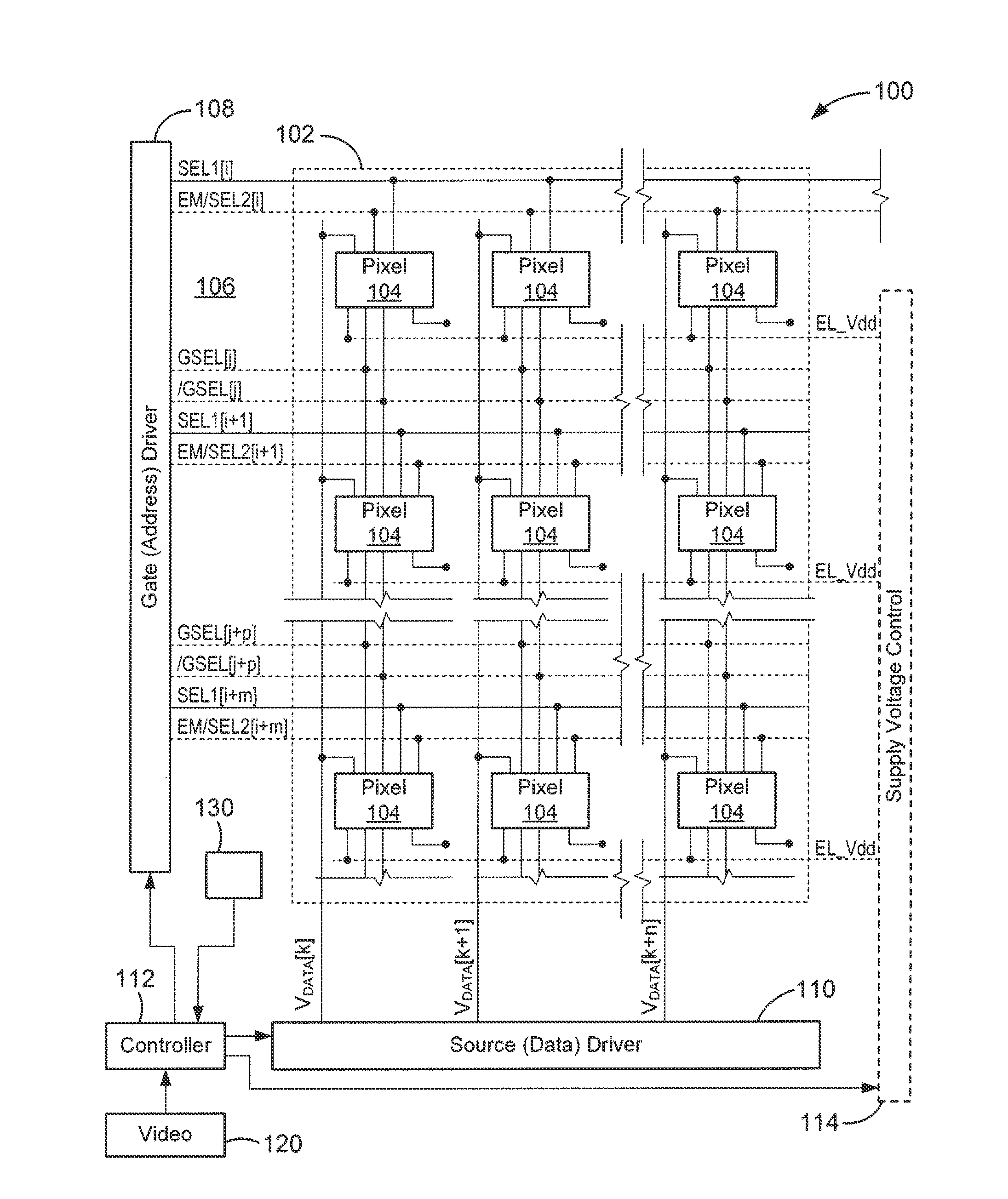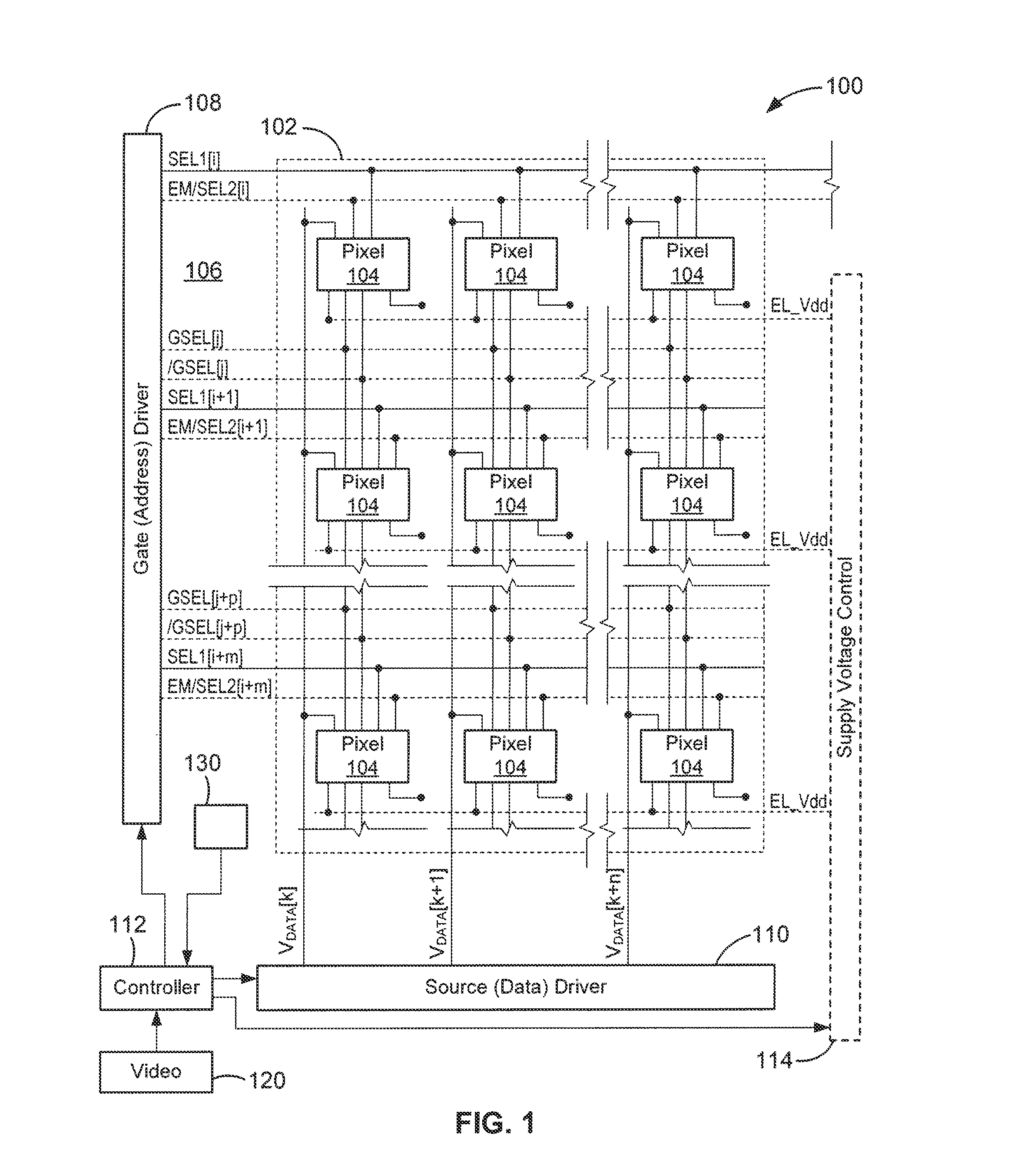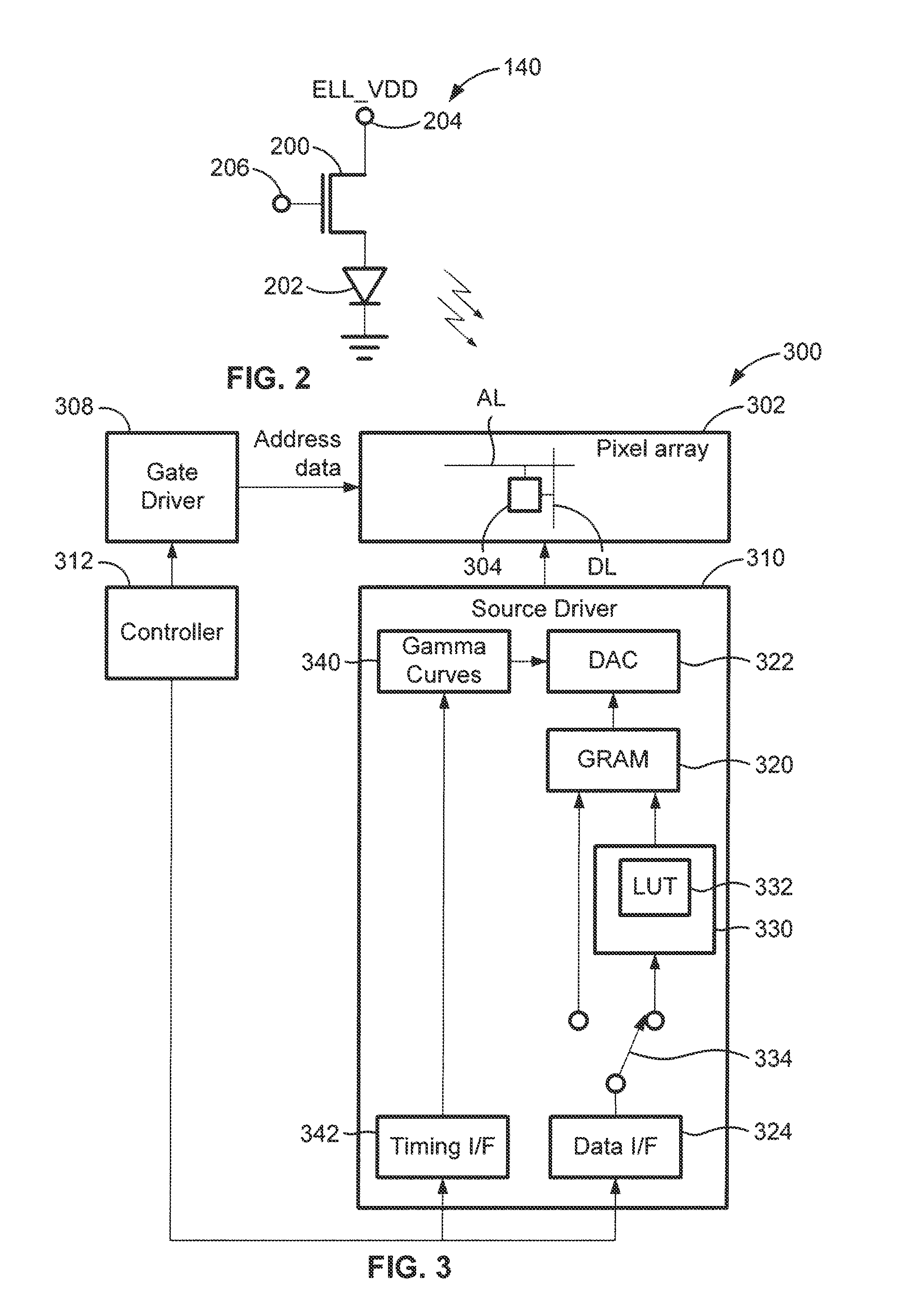Compensation accuracy
a technology of compensation accuracy and luminance, applied in the field of display technology, can solve the problems of affecting the quality of output in an oled based pixel, and the inability to achieve the desired higher luminance level for more effective compensation while within the parameters of image data
- Summary
- Abstract
- Description
- Claims
- Application Information
AI Technical Summary
Benefits of technology
Problems solved by technology
Method used
Image
Examples
first embodiment
[0088]FIG. 19 illustrates a first embodiment, in which:[0089]1) The frame is divided into two or more sub-frames 191 and 192 (or two or more consecutive frames are used as one set of sub-frames).[0090]2) The compensation data is applied to at least one of the sub-frames.[0091]3) The video sub-frames and compensation sub-frames are different.[0092]4) Thus, both video and compensation data can be as large as data resolution of the driver.[0093]5) The sub-frames can have different size. For example, the video sub-frame can be longer than the compensation sub-frame. This results in less brightness reduction because of using part of the frame for compensation. It also results in smaller steps for compensation due to the smaller sub-frame, which can improve the external compensation accuracy.
second embodiment
[0094]FIG. 20 illustrates a second embodiment, in which:[0095]1) The frame is divided into two or more sub frames 201 and 202.[0096]2) The compensation data is applied to at least one of the sub-frames 201.[0097]3) If the video calibrated data is larger than the data resolution of the driver, the extra data can be transferred to the other sub-frame 202 (left-over sub-frame).[0098]4) There can be multiple left-over sub-frames.[0099]5) The sub-frames can have different sizes.
third embodiment
[0100]FIG. 21 illustrates a third embodiment, in which:[0101]1) The frame is divided into two or more sub-frames 211 and 212.[0102]2) The compensation data is divided between sub-frames (this division can be with different weights, but the best visual effect is achieved when the video is divided by sub-frames equally and the residue value is applied to one or more than one sub-frame).[0103]3) The sub-frames can have different sizes.
[0104]Time Division Compensation
[0105]FIG. 22 illustrates a first embodiment, in which the calibrated video data 221, which is the video data manipulated with the compensation data, is in two or more frames. For example, if two frames are used for this purpose, the calibrated data is divided by two and each frame contains half of the calibrated data. The residue of the division can be shown in either of the frames. For example, if the calibrated data is 311, one frame contains 155 and the other frame contains 156.
[0106]Step 222 determines whether there is...
PUM
 Login to View More
Login to View More Abstract
Description
Claims
Application Information
 Login to View More
Login to View More - R&D
- Intellectual Property
- Life Sciences
- Materials
- Tech Scout
- Unparalleled Data Quality
- Higher Quality Content
- 60% Fewer Hallucinations
Browse by: Latest US Patents, China's latest patents, Technical Efficacy Thesaurus, Application Domain, Technology Topic, Popular Technical Reports.
© 2025 PatSnap. All rights reserved.Legal|Privacy policy|Modern Slavery Act Transparency Statement|Sitemap|About US| Contact US: help@patsnap.com



